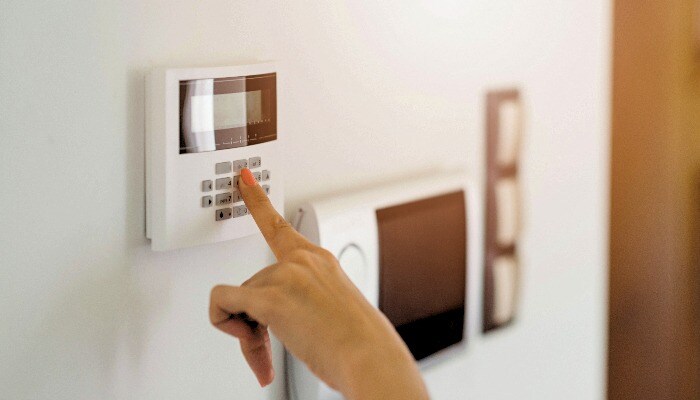In today’s fast-paced business environment, security has become a paramount concern for organizations of all sizes. One effective way to enhance security is through the use of back to base alarm systems. These systems not only provide protection but also ensure a rapid response to potential threats. In this article, we will delve into how back to base alarms work, their importance for businesses, and how to select and implement the right system.
Understanding the Basics of Back to Base Alarm Systems
Back to base alarm system are designed to notify a central monitoring station when an alarm is triggered at a business premises. The term ‘back to base’ refers to the communication from the alarm system to the central monitoring station, where trained professionals can take immediate action.
The Concept Behind Back to Base Alarms
The fundamental concept behind these alarm systems is to create a secure line of communication between your business premises and a monitoring center. When an alarm goes off, it sends a signal back to this center, alerting staff to potential breaches or emergencies. This ensures that quick action can be undertaken, ranging from contacting local authorities to notifying designated personnel. The immediacy of this response can significantly reduce the potential for loss or damage, making it a vital component of modern security strategies.
Moreover, back to base alarm systems often incorporate advanced technology such as real-time video surveillance and remote access capabilities. This allows business owners to monitor their premises from anywhere in the world, providing peace of mind even when they are away. Enhanced features like smartphone notifications and remote control of alarm settings further empower users, enabling them to respond to incidents swiftly and efficiently.
Key Components of a Back to Base Alarm System
A typical back to base alarm system consists of several key components, including:
- Control Panel: The hub of the alarm system that receives signals from sensors.
- Sensors: Devices that detect unauthorized access or environmental changes (like smoke).
- Communication Module: Ensures the signals reach the monitoring center, using various communication technologies.
- Monitoring Station: A centralized facility where trained professionals monitor alarms and respond to alerts.
Each component plays a critical role in the system’s overall effectiveness, contributing to a cohesive security solution. For instance, the sensors can be tailored to specific environments, such as motion detectors for high-traffic areas or glass break sensors for windows. This customization ensures that businesses can create a security setup that is not only effective but also minimizes false alarms, which can be a significant concern for both the business and the monitoring station.
Additionally, the communication module can utilize various technologies, including cellular networks, internet protocols, and even satellite communications, ensuring that the signal is transmitted reliably under different circumstances. This redundancy is crucial, especially in situations where traditional phone lines may be compromised. By integrating these advanced technologies, back to base alarm systems not only enhance security but also adapt to the evolving landscape of threats faced by businesses today.
The Functioning of Back to Base Alarm Systems
To understand the effectiveness of back to base alarm systems, it’s important to look at how they function in real-time scenarios. These systems are designed to provide immediate feedback and deploy essential responses when an incident occurs.
The Alarm Activation Process
The process begins when sensors are triggered. For instance, if a door opens unexpectedly during non-business hours, the sensor sends a signal to the control panel. The panel evaluates the signal and, if deemed necessary, activates the alarm, which then communicates with the monitoring center.
This rapid response is crucial, as it quickly informs monitoring personnel of the situation, allowing them to assess the nature of the alarm and determine if it’s a false alarm or a legitimate threat. In addition to door sensors, many systems incorporate motion detectors, glass break sensors, and even environmental sensors that can detect smoke or flooding. Each of these components works in tandem to create a comprehensive security network that can adapt to various threats, ensuring that all potential vulnerabilities are covered.
The Role of Monitoring Centers
Monitoring centers play a pivotal role in the back to base alarm system. Staffed by trained professionals, these centers are equipped to receive alerts and respond accordingly. When an alarm is activated, the center quickly identifies the business location and assesses the severity of the alarm.
They may dispatch law enforcement or emergency responders while simultaneously trying to reach the business owner or authorized personnel. This swift communication is vital in mitigating potential damages or losses. Furthermore, monitoring centers often maintain a detailed history of alarm activations, which can be invaluable for understanding patterns of activity, identifying frequent false alarms, and enhancing overall security strategies. With advancements in technology, many monitoring centers are now integrating video surveillance feeds into their response protocols, allowing them to visually assess the situation in real-time and provide critical information to responders before they arrive on the scene.
The Importance of Back to Base Alarms for Businesses
Understanding the importance of back to base alarms is essential for any business looking to enhance their security measures. These systems not only provide a safety net but also play a significant role in ensuring the overall continuity of operations.

Enhancing Security Measures
Implementing a back to base alarm system greatly enhances the security infrastructure of a business. Not only do these systems deter potential intruders, but they also reassure employees and clients alike that their safety is a priority.
Moreover, businesses are likely to experience reduced insurance premiums due to the increased level of security, making it a financially sound investment.
In addition to physical security, back to base alarms often integrate with other security technologies, such as surveillance cameras and access control systems. This interconnected approach creates a comprehensive security network that can be monitored in real-time, allowing for immediate responses to any suspicious activity. By utilizing advanced technology, businesses can stay ahead of potential threats and ensure a safer environment for everyone involved.
Minimizing Potential Business Risks
In any business, risks are inherent, but the right alarm system can minimize these risks significantly. Notifications triggered by back to base alarms ensure that any unauthorized activity is swiftly addressed, reducing the chances that a small issue escalates into a larger crisis.
This proactive measure helps safeguard company resources, sensitive data, and overall assets, fostering a more secure business environment.
Furthermore, the presence of a reliable alarm system can enhance employee morale and productivity. When staff members feel secure in their workplace, they are more likely to focus on their tasks without the distraction of safety concerns. This sense of security can lead to increased job satisfaction and retention, which are crucial for maintaining a stable workforce. Additionally, a solid security reputation can attract new clients and partners, as they are more inclined to engage with businesses that prioritize safety and risk management.
Selecting the Right Back to Base Alarm System
Once you’ve recognized the importance of these systems, the next step is selecting the right one for your business. Not all alarm systems are created equal. Therefore, understanding what to consider when choosing a system is crucial.
Factors to Consider When Choosing an Alarm System
When selecting a back to base alarm system, businesses should consider several factors:
- Scalability: Ensure the system can grow with your business.
- Integration: Look for a system that can integrate with existing security measures.
- Cost: Evaluate the costs against the features offered; the cheapest option may not always be the best.
- Reputation: Research the manufacturer and monitoring service reputation to ensure reliability.
Understanding Your Business’s Unique Security Needs
It’s essential to tailor the alarm system to fit specific business needs. Each company has different security challenges based on its location, industry, and size. Conducting a risk assessment can help identify potential vulnerabilities, enabling you to choose the most effective system.
Additionally, consulting with security professionals can provide insights that help in making an informed decision.
Implementing Back to Base Alarm Systems in Your Business
After selecting the appropriate alarm system, the implementation process is the next critical step. A successful rollout can ensure that the benefits of the system are realized quickly and effectively.
Installation Process and Best Practices
Installing a back to base alarm system requires careful planning. Best practices include:
- Conducting an environmental assessment to determine optimal sensor placements.
- Utilizing professional installation services for intricate systems.
- Conducting a thorough test of the system post-installation to ensure proper functionality.
These steps contribute to a smooth installation process that mitigates potential issues in the future.

Training Staff on Alarm System Usage
Once the system is installed, training your staff on how to use it is essential. Personnel should understand how to operate the system, respond correctly to alarms, and know the protocols for potential threats.
Regular drills can help reinforce this training, ensure everyone is prepared for real scenarios, and cultivate a culture of security awareness within the organization.
In conclusion, adopting a back to base alarm system is not merely an option for businesses; it’s an essential component of modern security strategies. By understanding its workings, importance, and implementation strategies, businesses can significantly enhance their safety measures and reduce risks, ultimately ensuring a safer working environment for everyone involved.
See Also: Alarm monitoring service: the key to fast response and secure properties.

